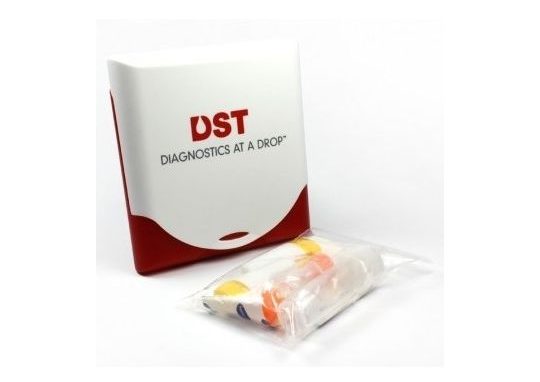Chemist.net Cookie Policy : We use cookies to enhance your user experience. To find out more please view our cookie policy
What is Food Intolerance and How Do You Treat it?

Food intolerance is described as the inability to digest certain meals and the resulting unpleasant bodily reaction. It produces symptoms like bloating and stomach aches that appear a few hours after eating the food. It’s important to understand the condition through reliable testing. Keep reading to learn about food intolerance testing kits.
The number of individuals who believe they are suffering from food intolerance has increased considerably in recent years, but it's difficult to estimate how many are genuinely affected. Many people can assume that they have this condition without knowing that their symptoms are caused by something else.
What are the symptoms of food intolerance?
People with food intolerance commonly experience the following symptoms:
- Stomach ache, bloating, wind, or diarrhoea
- Rashes and itching on the skin
It's tough to tell if you have a food intolerance because the symptoms are similar to those of many other illnesses.

Are there at-home food intolerance testing kits?
Even though there are currently no at-home testing methods for food allergies, there are reliable intolerance testing methods.
Food intolerance tests might help you figure out which meals cause unpleasant symptoms like gas and bloating. Many testing firms provide practical advice to assist you in managing your symptoms.
The tests differ depending on the following:
- Sample collection - Hair strands, cheek swabs, and blood samples can all be used to collect data.
- What's being tested - The outcomes of tests range from intolerance to your genetic reaction to diet, exercise, and other factors.
- The type of assistance - While not all companies provide assistance with making adjustments, many do provide tailored information to help you improve your health.
What are the most accurate food intolerance testing kits?
If you feel you are suffering from food intolerance or have inexplicable symptoms, a food intolerance test could assist in providing some answers.
Elimination diets, in which foods are cut out and then reintroduced to test symptoms, take time and are often hard to follow correctly.
A test can assist in pinpointing which foods cause your symptoms, allowing you to get treatment faster. Any symptoms you are experiencing should be discussed with your pharmacist or doctor.
Here is one of the most accurate food intolerance tests you can find online:
Cerascreen Food Intolerance Test

What are the 3 most common food intolerances?
The following are the three most frequent food intolerances:
- Lactose - a sugar that is found in milk
- Casein - a milk protein
- Gluten - a protein found in rye, wheat and barley grains

How do you determine food intolerances?
Food intolerance symptoms can be similar to those of chronic digestive diseases like IBS. Certain symptom patterns, nevertheless, can assist a clinician to differentiate between the two.
People can record a food diary to track which foods they eat, as well as the symptoms they experience and when they occur. These statistics can assist them and their healthcare practitioners in determining which foods cause unpleasant reactions.
Alongside food intolerance tests such as the one above, an exclusion diet, often referred to as a diagnostic or elimination diet, is another effective diagnostic technique.
Some people discover that if they avoid a certain food for a period of time, they don't get a reaction anymore when they consume it afterwards. Tolerance is the term for this. Maintaining tolerance is frequently a matter of determining how long to refrain from consuming the food and the amount to consume when you re-introduce it. You can get more help from your pharmacist.
Shop online today at Chemist.net for food intolerance test kits.
This blog post was written on behalf of Chemist.net by Pharmacy Mentor.